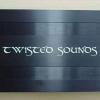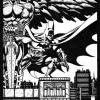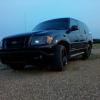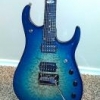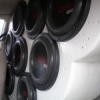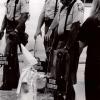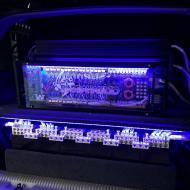Leaderboard
Popular Content
Showing content with the highest reputation on 02/29/2012 in all areas
-
3 pointsBuilt a desk for my room. Just needed some extra space to work on things. A new computer desk is in the works as well.
-
2 pointsSo now that i got them all setup and amp and ew setting on go i cant believe how great these perform Im no sub expert but ive heard a few and these 2 10" dcons hit hard Tight and clean sound while still pounding hard. Very tight punches and deep lows all while sounding perfect. Now i see the why people like these. Cant imagine the icons and up. Im a very happy satisfied constumer!
-
2 points
-
2 points
-
1 pointLets see how many likes we can get on this layout. We want to offer some more "in style" colors, we are thinking dark purple, sapphire blue and black. Here is the purple design. Also, if you are at SBN, hunt us down, you will get a free shirt while supplies last "Like" (right hand side of post) this post if you like the design!
-
1 pointIntro: Today I will be testing 14 different brands of 1/0 power wire. The brands I will be testing are brands that I have found in builds on this forum and have been recommendation to test by other members on the SSA forum. Lately on the forums I have been noticing people asking a variety of question in regards to 1/0 wiring as in to flex and a comparison of different brands of wires and how thick each wire is in comparison to other brands. So I thought it was time for side by side wire comparison of different brands of wire that I have commonly found in use or have been suggested to me by others. A little background about myself I have done about five different builds on my old 95 grand-am, each new build included a new level of difficulty on the install and build. From a simple sealed box, all the way up to a 6th order tapered horn box, along with fibreglasses door panels to accommodate two pairs of components, also I have done a fair amount of sound deadening. I have worked in the Mould trade at varies shops for the past 4 years now. At a Mould shop we build Mould to be used in plastic injection of primarily, but not limited to, car parts. We have also built a number of tools for rubber maid, air plane companies, small toys, along with plastic forks and spoons also. In the excel chart included, near the end, those costs were a bit higher than usual as I didn't purchase the wire in bulk but I purchased it from a 3ft stand. Now with that being said as you purchase more wire the cost per foot will decrease. In all the pictures of the wires flexing I used a beat up Kent State pen to use as a reference so that each wire will be compared to the pen and the pen is mainly there to show as a reference. Worthy of mention, if you pay close attention to how the wire lays, after the knot, you can easily see which wires are a bit tougher to use. For example of this notice the Street Wires and the Q-Power wire, notice how the Street Wires lays are after the knot, they nearly fall parallel with each other, while as the Q-Power flexes out nearly as long as the pen. I will be using a dial vernier(caliper) to do take all my measurements from the under listed wiring, to compare OD of the over wire, and the OD of the conductor , along with how thick each jacket is. I have also included percentages as those are a bit easier to understand. from left to right! (or in the first pic right to left) EFX Scosche Monster Sound Quest Xscorpion Rockford Fosgate Tsunami KNU KCA KNU Kolossus Stinger HPM Raptor Cadence Q-Power Street Wires Welding Supplies (provided by Sir-Lancelot not tested yet) here is how I got my dimensions, I was using Raptor Wiring in this picture. as you can see I used a vernier to get the Outside Diameter (OD) and the CON OD (Conductor Outside Diameter), I then subtracted those to find the Jacket thickness, then I found how much of the OD was the Jacket and how much of the wire was the conductor. Subjective Review: Please note Monster cable and how they have a piece of plastic running though center! With this center piece of plastic in the wire it makes it more difficult to bend and the center piece was added to the jacket as it isn't conductor and it wasn't helping the conductor . These wires will all get a under average, average or above average rating based on three different factors, such as conductor percentage(the average being 63% of the wires I tested) bend-ability and cost(average cost being $3.6 per foot of the wires I tested). So for example if a wire is bendable, cost is good, and the conductor percentage is over 63% the wire will get an above average rating, and if the wire is bendable, but the cost is higher, and the conductor percentage is under 63% the wire will get a under average rating. Knowing the jacket thickness would help show us why some wires are harder to bend then others, but the bend-ability will also depend on how stiff the jacket is. When doing the bend tests in the below pictures I tried to be fair and apply the same amount of force to each wire when I was bending and knotting them. ALSO very important in this part of the review, it is very subjective and should be treated as such and taken as such. 1. EFX Scosche, this wire I would consider to be an average in bend-ability and cost was on the higher side and the conductor OD was over the average 63%. 2. Monster, this wire I would consider to be the worst of all for bend-ability and the cost was on also on the higher end and the OD was the greatest of all the wires compared today most likely due to the center core piece. 3. Sound Quest, this wire I would consider to be an under-average wire due to the lack of bend-ability as you can see how the knot is so big also the conductor OD undersized and the cost was higher. 4. Xscorpion, this wire was one of my favourite wires to use but it will get an average rating due to its price tag per foot but its bend-ability was great and its conductor OD was under the average of 63%. 5. Rockford Fosgate, this was again my most favourite wire to use as its bend-ability was amazing, and the conductor OD is the third highest, the only negative this wire has is its price tag. another upside to this wire is the strands are Pure-Crystal Oxygen Free wire, notice it has a silvery colour to it and it looks 6. Tsunami, this wire has bend-ability in its corner as bending this wire was smooth and required very little effort, but this wire gets and under average rating because of its price and under average conductor percentage. 7. KNU KCA, this wire I am not 100% sure on how to rate it because for one it is CCA, its flex is off the wall, the conductor OD percentage was the highest of all the wires tested, and it was one of the cheapest wire I tested. SO technically it could get all 3 points, but the wire been CCA would that be considered a negative make this wire just average? 8. KNU Kolossus, this wire is the one brand of wire I have used in all my builds to date and I like it second to the RF wiring. The Kolossus wiring has one of the best flexibility out there and the only negative it has is the price which is over the $3.6 per foot. 9. Stinger HPM, yes this is the legendary pinnacle of wiring out there the HPM wiring from stinger but due to my research I would give it a under average rating because the price was very high, and the conductor diameter is less than the average percentage point and the flex of this wire was the only highlight of this wiring. 10. Raptor, this wire yields a average rating as this wire has the flex, has the price factor but the conductor OD is under the average percentage by a good 10%. 11. Cadence, this wire gets a above average rating as it has the flex, the conductor OD is over the average conductor plus the cost of this wire is the second cheapest as it rounds out to $2 per foot. 12. Q-Power, this wire will get a under average rating as per my standards of wire as the flex wasn't quite up to snuff, and the conductor percentage wasn't there and also this wire had the smallest overall OD of all the brands, the only positive for this wire was the price tag! 13. Street Wires, and lastly this wire gets an average rating as it has the flex, and the conductor percentage but it doesn't have the price factor. 14. Welding Supplies coming very soon! With all the above being said I would like to sum it all up in another excel table. As you can see half the wire brands were able to make it past my grading scale as 7/13= 53.8% passed! So basically in my opinion I would recommend the Cadence wiring based off of my subjective review of the wires as stated previously above. If you want to go OFC or the KNU KCA if you want to go CCA! and another close runner up I would like to recommend is Rockford Fosgate or KNU Kolossus! My recommendations have been based on my results and my person use of the above mentioned wire. Based on these sites as references each site basically says the conductor OD should be about 0.32 inches, and as we can all see all the wires tested are over that diameter so all the wires should have gotten a +1 for that but my review was based on wires vs wires not the standards but we can use the standards as a good reference to base everything off of! http://www.allaboutcircuits.com/vol_5/chpt_3/1.html http://www.powerstream.com/Wire_Size.htm http://en.wikipedia.org/wiki/American_wire_gauge Not So Subjective: The reason why the above is a bit suggestive is because with this method you can't account for the individual strand size, count and construction of how the copper was packed into the jacket, which could make the conductor OD a bit smaller due to packing. So to help eliminate this issue a bit I picked up a nice tobacco scale and set it to Oz. That way I would be able to measure accurately the amount of copper which is in each wire brand. Also keep in mind that the KNU KCA and Q-Power is CCA strands. As you can see in the below pictures I cut the copper out of the jackets and placed it on the scale to get a reading on the scale. The first pic is of EFX Scosche and the second picture is of Monster. From there I also measured the diameter in inches of an individual strand of copper. As you can see in the pic this strand is a good 0.005" OD, and keeping in mind a piece of hair is about 0.003" thick. From there I took a bunch of strands and placed them on the scale to achieve a reading of 0.01 Oz. Once I got that reading I counted all the stands. On average there was about 25 strands but for some it was a good 50 strands. So I took 0.01 divided by the number of strands to get the weight of each individual strand then divided that by the overall weight of the overall total weight to get a potential amount of strands per brand. As you can see that number is close in some cases and is far off in others. So then I thought I could compare that number to the amount of potential strands by using the cross sectional areas of the strands vs. the overall CON OD. But as you can see those two numbers didn't like each other very much and finding the amount of strands was a bit tricky. So take the amount of strands at face value which isn't very much and let me know what you think. Also if you notice in the last pick I also found how much money I can potential get from a scrap yard if I turn all the strands in for some cash. I based my copper price off of June 1st price of copper per pound. As you can see on that day copper was selling for about 4.10$ per pound. So I took all my Oz and summed them up then divided by 16 (16oz = 1lb). and all the extra hallow jackets! I took a look on a few other sites to see how much copper should be found in each run of 1/0 wire, here are the two sites I used: http://www.allaboutcircuits.com/vol_5/chpt_3/1.html http://www.engineersedge.com/copper_wire.htm on each site it says 316-327lbs per 1000ft so I took an average number of: 320lbs/1000feet= 0.32lbs/foot 0.32lbs/foot/12=0.026lb/inch 0.026lb/inch converted to Oz= 0.416Oz/inch 0.416Oz*6inch=2.496oz/6inch So as you can see only three different brands of wire were able to meet and or surpass that rating. Part of why the other wires failed to meet that rating could be due to the tolerance of the scales being used or maybe the number given could be the copper plus the jacket, or even the number could have been for a solid core rather then strands, and due to being in strands there could be a slight variation in weights. For the most part the wires that are close to the 2.49oz mark are most likely close enough for government work. But with that being said the cables that are way off it would tell someone to steer clear of that wire. If anyone gets a hold of the DC power wiring or Shoc audio wiring, and has an extra's foot or so laying around please let me know as I would like to test it out! I hope you guys have enjoyed this post, and I hope it makes your life a bit easier to pick a brand of wire! If you have any questions please post them or p/m me and if you need some big 3 wiring let me know! I would like to say thank you to Aaron(denim), Brad(Impious) and Mike(95Honda) for their help in editing this with me and helping me bring out what needed to be said and other points I missed. Kenneth
-
1 pointOnce the posting bugaboo's are ironed out, I will mention the gallery problems to Invision.
-
1 pointGreat to hear! I love my Xcons like they were my young. SSA customer for life
-
1 point
-
1 point
-
1 point
-
1 point
-
1 pointbefore sbn ill have 4 3ks on 16v i cant wait for that
-
1 point
-
1 pointYou could mask off the area, push the box into position (mask off the box too), and spray expanding foam. Pull box out, sand down the excess foam, put box back in, and make a trim panel to go around.
-
1 pointRated RMS power handling isn't a power recommendation, as I stated above it's simply the point at which things can potentially start to break. It's not a power minimum, it's a recommended power maximum. There are two types of power handling: Thermal and mechanical. Thermal power handling is how much power the voice coil is able to accept before it begins to overheat, which can lead to failure. It is primarily based on the design of the driver; the size and design of the voice coil and how well the voice coil can dissipate heat. Mechanical power handling is how much power the driver is able to accept before you exceed it's suspension/excursion limitations. This is based on both the driver and more importantly the enclosure. Rated RMS power handling is typically a thermal rating. Since mechanical power handling is determined mostly by the enclosure, depending on the type and design of the enclosure it's entirely possible to mechanically damage a driver with the rated RMS power if that enclosure allows the driver to exceed it's mechanical limits with that level of power.
-
1 pointCost. The Xcons are more than 3x the cost of the Dcon. Not everyone is willing or able to drop $400+ into a subwoofer. On the flip side, you're not going to be able to build a driver than can reliably handle 2kw that only costs $125. So they have driver's available that span both the cost and performance spectrum. The only thing power handling determines is when things start to break. It doesn't mean the subwoofer needs that much power to operate. Just because you have a 2kw amplifier doesn't mean the subwoofer is receiving 2kw. I think you would be surprised by how little power a subwoofer (or any speaker) actually receives when playing music. It's a fraction of the power rating stamped on the amplifier. On top of that, it's based on the volume you are listening to the subwoofer at. Simple way to think about it.....does the subwoofer sound "worse" when you turn the volume knob on the headunit down? The more power a driver receives, the less linear it becomes. Which means it's distortion and other nonlinearities only increase as power is applied. So while not being as loud on 400w compared to 2kw, it will absolutely and will always objectively "sound better" when judged by any metric but shear SPL output.
-
1 point
-
1 point
-
1 pointthanks man. ill probably pick up another set next week for the other input side.
-
1 pointHey everyone thanks for waiting this out for so long. The reason it took me so long to get part 2 of 3 of this review up is Canada post was on strike for a good month and you can imagine the mess that made! At any rate here we go with part 2 of 3. I will be reviewing these brands in the same fashion as I did previously. Here are the 7 brands Audiopipe - Supplied by sacsking916 on CA.com Bullz Audio - Supplied by J@SouthSlap on SSA.com IXOS - Supplied by Fusetrapper on ebay.com Kicker - Supplied by Audio4ever on CA.com Mobilespec - Supplied by yet again Audio4ever on CA.com Flex-A-Prene Welding Wire - Supplied by faizal_jamal on ebay.com Shoc OFC (current discontinued) - Supplied by siccostyle's I would first like to say thankyou to everyone who donated wire to me and or made it very cheap for me to purchase. If you notice I said this is part 2 of 3. Part 3 of 3 will consist of 3 brands, IXOS, KNU KOL, Monster being load tested with a clamp meter and a carbon pile load tester of about max ~500 amps, This will be a two man event more on that later. Now onto the info! Subjective review 14. Flex-A-Prene Welding wire wasn't to easy to flex and bend but it was do-able, one thing worthy of mention is there was a cardboard liner on the inside of the jacket it made a cool noise when I cut it. also I noticed that these strands were a lot thicker and were straight. The price on this wire which I found on ebay which was being sold as fork truck/ welding wire was quite reasonable and down to earth, the only down side to it was it had the least conductor OD of all the wires viewed today. 15. Audiopipe, this wire was difficult to bend, and the cost was very cheap! The price I found was on ebay and it came to 1.54$ per foot, but worthy to say the conductor OD was on the average size so this will get an average rating although I suspect this from CCA wiring 16. Bullz Audio was another one of those super hard ones to bend but it was also the cheapest wire I was able to find, with the cost being 1.06$, and Conduct OD was also average on it. 17. IXOS, is the next on the chopping block. This wire is what some would call the holy grail, or rather an infamous wire as it was the most expensive wire I have reviewed. The bend-a-bily of this wire was extremely easy to bend and offered little resistance, and yet again the conductor OD was yet again average. 18. Kicker, yet again another fan favorite, this one was also very easy to bend and the conductor OD was above average here. the only down side was the price tag. 19. Mobilespec, a brand I personally haven't heard of and it was a bit hard to find a price tag on this wire but I eventually did and I got 3.7$, which is a bit high, the bendy-ness of this wire was horrid and the conductor OD was under the average overall this wire wouldn't be my favorite pic. 20. And last but not least Shoc Competition OFC wiring. This wire was very easy to beind and one of my favorites to bend! The price is unknown as it is currently discontinued from what I can tell, and it has the average conductor OD of the wires viewed today. and to wrap it up have a quick look at this! Well this has been a long and drawn out subjective review filled with lots of pictures, I hope you all have enjoyed it and I would like to give my subjective top picks and my closing thoughts at this time. Out of all the wire I was able to play around with my favorite pic from the OFC side of wires was a tie between Knu KOL, IXOS, Flex-A-Prene. These wires will always get my nod of approval because they are easy to bend and they don't cost that much, along with a nice amount of copper in them to support a fair amount of current flow. Any of those three listed above would/ should be able to suit anyone needs. My top picks for CCA wiring would have to be Cadence and KNU KCA. Both of those wires showed great amounts of CCA in them and very flexible to bend around a tight corner! Again I have never used CCA wiring before but if I ever had to or wanted to switch I would most definitively pick one of those two. Here is the original for comparison Not So subjective review Just like last time I gut a 6inch section from each brand and cut the jacket off to reveal just the copper and I weighted that copper and displayed my findings. Based off of my findings with the tobacco sale I would have to pick either KNU KOL, Kicker, RF wiring and IXOS , as they all showed a lot of copper content. But based on price and copper content I would have to pick KNU KOL over all the brands and a close runner up would have to be the welding wire. I would have picked Kicker or RF or IXOS but their pricing is a bit high as compared to KNU or even Welding wire which is an excellent runner up for its 3-3.5$ price range. Also please note that since I did this review KNU has raised there price of the KOL wiring and it is still a better value! So with this I would like to conclude and say I had a lot of fun doing these reviews a I have learned a lot about 1/0 and how companies will all vary but please keep in mind that the Conductor Diameter of 1/0 wiring should be around 0.325" as per the standards I have read on the web and all of the wires are over this standard. ( http://www.powerstream.com/Wire_Size.htm ) Again I hope you all have enjoyed reading this and maybe learned a little bit along the road! Please feel free to post comments, questions or maybe even ask for a little bit of clarification on certain points I have touched on that weren't fully understood. Like always if you would like to see some more pictures of anything close up or a different angle please just drop me a p/m and I will be glad to help. Enjoy your day and week Kenneth
-
1 pointStupid question: If his alts are done and have been forever, and you're just waiting to complete the brackets......why not ship the guy his alts (more than likely the most costly part of this transaction), and DC Power contract and pay for someone like tejcurrent, another manufacturer right here on this forum, to build the brackets? It seems like this would go a long way towards completing the transaction on a pretty timely basis. At the very least, this would put the biggest chunk of change back into the OP's hands by having a tangible product in his possession. Then the only thing left is the bracket, which if another manufacturer such as tejcurrent can't produce on a timely basis, it's less of a refund that would need to be made by DC. And the OP can be on his merry way finding someone who can build a bracket for him. With all of the machine shops in the US, and another manufacturer right here on this forum whose explicit business is building alt brackets, I can't believe this isn't something that could have been completed at least since the start of this thread.....much less nearly 2 years.
-
1 pointAfter this long and this much trouble, I'd be refunding him AND sending his alternators to him. FREE.
-
1 pointAnother great read that I felt was worth having here also: Anatomy of the Power Amplifier Dissecting the Modern Audio Power Amplifier and Power Supply By Robert Zeff With the Proliferation of Different Amp Types, Which is the One for You? In the past we had essentially two types of amplifiers to choose from: Class "AB" and class "A". Today we have AB, A, D, G, H, & T, in addition to some that do not have a class name. New technology brought down the size and price while improving performance and efficiency. We'll review the various topologies of the modern amplifier, spending extra time on the aspect of efficiency (as the quest for smaller, more efficient designs have spawned the class D, G, H, & T designs). We'll also try to dispel some of the misconceptions and folklore that seem to surround amp design. Amplifiers require circuitry for short and thermal protection, fan control, turn on delay, and over voltage protection. In the past we littered the designs with dozens of components to handle these events. Today we can use a single microprocessor to handle all of this in addition to having many more features without additional cost. The microprocessor can monitor the battery voltage, internal voltages, temperature, control volume and crossovers, and drive external displays. These embedded computer chips also allow features like compression and power limiting with little added cost. Of course, what is an amplifier without a power supply? First we'll visit the power supply designs, as every amplifier needs one. The Power Supply The purpose of the supply is to convert the auto's battery voltage to a higher voltage. For example, if an amplifier is to produce 100 watts into a 4 ohm speaker, we need 20 volts RMS. This implies that we need about +/-28 volts. (20 volts R.M.S. = 28.28 volts peak). We call that the "rail" voltage. Since the amplifier's output transistors cannot pull all the way up to this rail, we actually need a slightly higher voltage. The process is to convert the 12 volts DC into AC, feed it to a transformer and convert it back to DC again. Converting the 12 volt battery voltage to AC is simple, a PWM (pulse width modulator) IC feeds a bank of MOSFETS (MOSFETs are switching transistors perfectly suited for this task). The 12 volt power is switched at a very high frequency, somewhere between 40 and 150 kHz. Slower switching speeds require a larger transformer, but high speeds have more switching loss. Advanced transformer core materials, faster rectifiers, and clever winding methods have enabled us to utilize very high frequencies. Some of today's better amplifiers have very small power supplies that produce enormous amounts of power. Regulated Power Supplies Most early audio amplifiers contained unregulated power supplies. Regulated supplies require very high quality filter capacitors (called "low ESR" capacitors), output chokes, and an optically isolated voltage feedback circuit. Regulation occurs by controlling the switching pulse width from 0 - 100% to compensate for changes in the battery and rail voltage. The same action occurs when the audio level increases. As the amplifier draws more power from the supply, the rail voltage drops. Again, the regulator circuitry senses this drop and responds with an increased pulse width. The high frequency PWM waveform is rectified (converted to DC) and applied to the output filter choke and capacitors. This output of this circuit is the + and - DC rails that feed the power amplifier. Unregulated Power Supplies Unregulated power supplies are less expensive than regulated supplies. They do not require an output choke, voltage sense or isolation circuitry. Because the duty cycle is nearly 100%, capacitor ripple current is much lower in unregulated supplies. Lower ripple current requires less expensive capacitors throughout. Often we hear that unregulated designs have more "headroom". That means that the amplifier will produce extra power during transients. Most home audio amplifiers employ unregulated power supplies. The power supplies in these amplifiers run at 60 Hz, thus the filter capacitors must be 200-500 times larger than those used in high frequency switchers. The extra capacitance in home audio amplifiers results in extra headroom. Headroom for anything other than very short transients simply doesn't exist in the unregulated designs. The following is an example of specifications for an unregulated vs. regulated amplifiers. Unregulated designs have a higher supply voltage at low power, causing higher voltage on the output transistors. This reduces the amplifier's efficiency. Small amplifiers (less than 100 watts) cannot justify the extra cost of the regulation circuitry, so we often see unregulated supplies in these amplifiers. Pros and Cons of Regulated / Unregulated SuppliesSome designers try to keep their supplies regulated down to battery voltages as low as 9.5 volts. The supply compensates by increasing the current. The following table shows voltage and currents for a 500 watt over-regulated amplifier operating at full power. The current increases dramatically at the lower voltages. Because of higher currents at the lower voltages, the supply efficiency drops further, requiring even more current. At higher voltages, the pulse width reduces, causing increased ripple current. This high current creates heat in the filter capacitors and can destroy the capacitor's electrolyte. Some manufacturers do not use capacitors of sufficient quality for this range of regulation. These amplifiers may not perform up to specification just one year after installation. Also, the extra current at low voltages is extra hard on a battery that is already suffering! So, we recommend that amplifiers stay in regulation down to about 11 - 11.5 volts. Any properly working charging system can easily keep the battery voltage well above this. The Amplifier Section, Class AB and AClass AB and A amplifiers are similar, so we'll discuss both here. Class AB amplifiers have transistors that pull up to the positive rail and transistors that pull down to the negative rail. This corresponds to the action of pushing the speaker cone out and in. Class AB means that the output transistors do not always have current on them. For example, when the upper transistors are pulling up towards the positive rail (pushing the speaker out), there is no current in the lower transistors. When the output signal swings through zero, towards the negative rail, the output transistor must go through a transition from zero current to a non-zero current. The best analogy that I can think of is driving an old car with too much slop in the steering. As you go from one side of the road's crown to the other, the steering crosses a "dead" zone, and you tend to over-steer. Special temperature compensated bias circuitry reduces this dead zone, known as notch distortion. The figure below shows the output of a class AB amplifier with too little bias and the resulting distortion. Notch distortion increases at higher frequencies and low volume levels. Some modern designs have reduced this type of distortion to very low levels. Class A means that every transistor is always conducting current. They are very similar to class AB amplifiers, but the bias circuitry is set so that there are very high currents in the output transistors. Because these amplifiers do not have this "dead zone', less feedback is required to achieve low distortion. A 100 watt amplifier may dissipate nearly 100 watts internally even when there is no audio output. This type of design is impractical in the harsh auto environment. Many class A amplifiers pedaled for the automotive market are not really class A. They are huge power wasters in the home as well. Input and Driver Stages The amplifier works this way: A small audio signal is presented to the amplifier's input. Transistors are not linear, which means that the input signal will distort somewhat as it passes through the various amplifier stages. To correct this distortion, a portion of the output is compared with the input. The difference creates a correction signal reducing this distortion. The input stage is a special type, called "differential". It has a + and a - input because it must accept both the audio input and the input from the feedback circuitry. Excess feedback can lower distortion dramatically, but cause instability. Careful design rules must be followed to avoid this instability. The output of the input stage feeds into the driver stage. The driver stage may use one, two, or three devices. Often this circuitry is referred to "Darlington", or "Triple Darlington". The driver circuit feeds the output stage, which may have two, four, six, or more transistors. The more output transistors, the better. Multiple output devices reduce distortion (requiring less negative feedback) and improve reliability. Bipolar or MOSFET? We have seen both MOSFET (Metal Oxide Silicon Field Effect Transistor) and Bipolar transistors used in audio amplifiers. Claims have been made that each is superior. I have seen claims that MOSFETs have a tube ("Valve" for the Brits) sound. This is more folklore. The musicians and their instruments are supposed to have "the sound", not audio equipment! MOSFETs are tougher than Bipolars, and can pull closer to the supply rail. It takes more Bipolar transistors to achieve the same power as a MOSFET, therefore Bipolar amps tend to be more expensive. But, MOSFETs are very non-linear, compared to Bipolars and require much more feedback to achieve reasonable distortion numbers. They are a great choice for bass amps, as low frequency audio is not difficult for a MOSFET. The most expensive car and home amplifiers almost always use Bipolar transistors. Efficiency What makes an amplifier get hot? Both the power supply and the power amplifier generate heat. The maximum efficiency of the power supply is nearly 100%. Good power supply designs, with the highest quality components approach 85%. The class AB amplifier efficiency at full power can approach 75%. The total efficiency, including the power supply, can be about 65%. But, efficiency drops at lower power and can typically be under 20%. A class AB amplifier actually runs cooler at full power than it does at half power. Run this amplifier into clipping and it might run even cooler! Where is all this power going? The output transistor is basically a large variable resistor. If the instantaneous output voltage should be 40 volts and the power supply is 100 volts, then 60 volts must be "wasted" in the output transistors. Driving a reactive load (like a speaker) causes the efficiency to drop ever further. This brings us to the other audio classes designed to improve efficiency. Class D First, let's dispel another myth: Class D does not stand for digital. The input is converted to a two-state (binary) representation of the audio waveform. That's where the similarity ends. This distinction is important because class D doesn't provide the benefits normally associated with digital components. That being said, class D designs dramatically improve efficiency. Instead of wasting power in the output transistor, the output is switched at a very high frequency between the positive and negative supply rails. If the output is to be zero, then the waveform is at a 50% duty cycle. If the output is to be a positive voltage, then the duty cycle would be greater than 50%. Because the output devices are either completely turned on (no wasted voltage) or completely turned off, theoretically efficiency is 100%. So the audio input must be converted to a pulse width modulated waveform (PWM). The yellow trace below is the output of the amplifier; the blue trace is the PWM waveform. The blue waveform is fed to an output filter, which results in the yellow output waveform. Notice that the output looks somewhat distorted. All of the switching noise and distortion cannot be removed and the result can be seen here. Because of this process of converting the input signal to PWM and converting back to analog, a good deal of distortion is introduced. Conventional feedback like that used in class AB designs is used in these amplifiers to reduce distortion. MOSFETs are the only choice for class D designs. Most class D designs are useful only for bass amps as they can not switch fast enough to reproduce high frequencies. Some high quality, full range class D designs exist for pro audio, but they are complex with multi-phased outputs. Class T Class T (Tripath) is similar to class D with these exceptions: This class does not use analog feed back like its class D cousin. The feedback is digital and is taken ahead of the output filter, avoiding the phase shift of this filter. Because class D or T amplifier distortion arises from timing errors, the class T amplifier feeds back timing information. The other distinction is that this amplifier uses a digital signal processor to convert the analog input to a PWM signal and process the feedback information. The processor looks at the feedback information and makes timing adjustments. Because the feedback loop does not include the output filter, the class T amplifier is inherently more stable and can operate over the full audio band. Most listeners can not hear the difference between class T and good class AB designs. Both class D and T designs share one problem: they consume extra power at idle. Because the high frequency waveform is present at all times, even when there is no audio present, the amplifiers generate some residual heat. Some of these amplifiers actually turn off in the absence of music, and can be annoying if there is too much delay turning back on. Class G Class G improves efficiency in another way: an ordinary class AB amplifier is driven by a multi-rail power supply. A 500 watt amplifier might have three positive rails and three negative rails. The rail voltages might be 70 volts, 50 volts, and 25 volts. As the output of the amplifier moves close to 25 volts, the supply is switched the 50 volt rail. As the output moves close to the 50 volt rail, the supply is switched to the 70 volt rail. These designs are sometimes called "Rail Switchers". This design improves efficiency by reducing the "wasted" voltage on the output transistors. This voltage is the difference between the positive (red) supply and the audio output (blue). Class G can be as efficient as class D or T. While a class G design is more complex, it is based on a class AB amplifier and can have the same clean characteristics as well. Class H Class H is similar to class G, except the rail voltage is modulated by the input signal. The power supply rail is always just a bit higher than the output signal, keeping the voltage across the transistors small and the output transistors cool. The modulating power supply rail voltage is created by similar circuitry that you would find in a class D amplifier. In terms of complexity, this type of amplifier could be thought of as a class D amplifier driving a class AB amplifier and is therefore fairly complex. How to Choose? Regulated or unregulated? Class AB, D, or T?If you're really into a lot of bass, the class D or T may be for you as these amplifiers will produce the highest SPL with the smallest size. If you just want to wake the neighbors, blur your vision, or make a big splash in SPL contests, maybe you just need one of the inexpensive, powerful, & dirty class D designs. Want the cleanest high frequencies? Maybe a good class AB amp would be your selection. Whatever you choose, I hope this information helps you achieve the sound you're looking for! Source: >> Click here for images and diagrams too <<
-
1 pointThanks!!! Hopefully it gives my son some good memories to keep forever and maybe pass along to his children.


